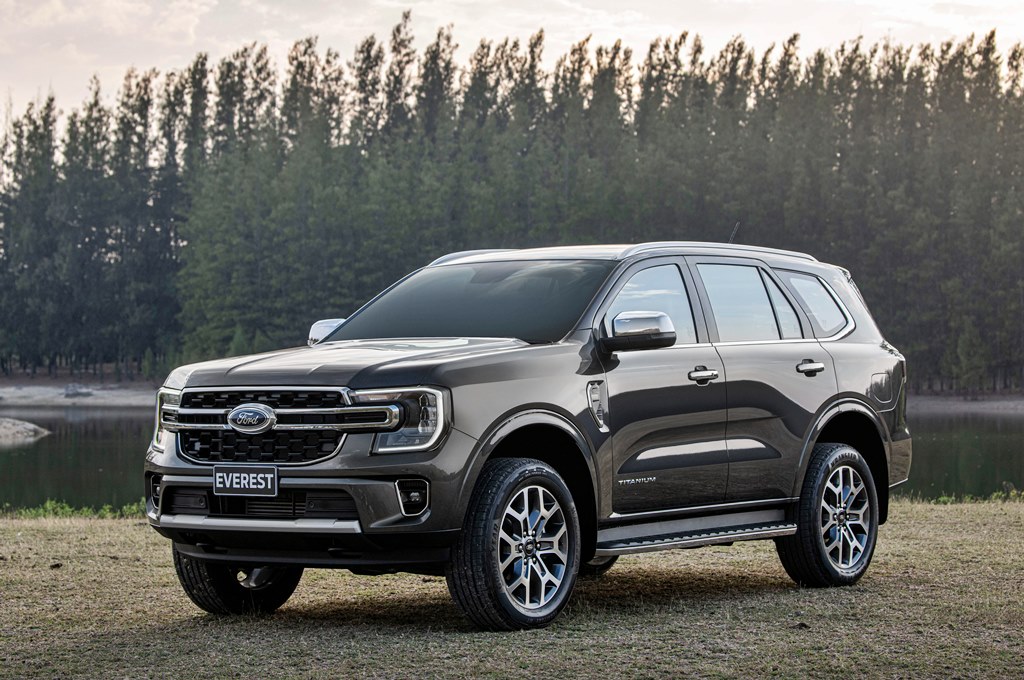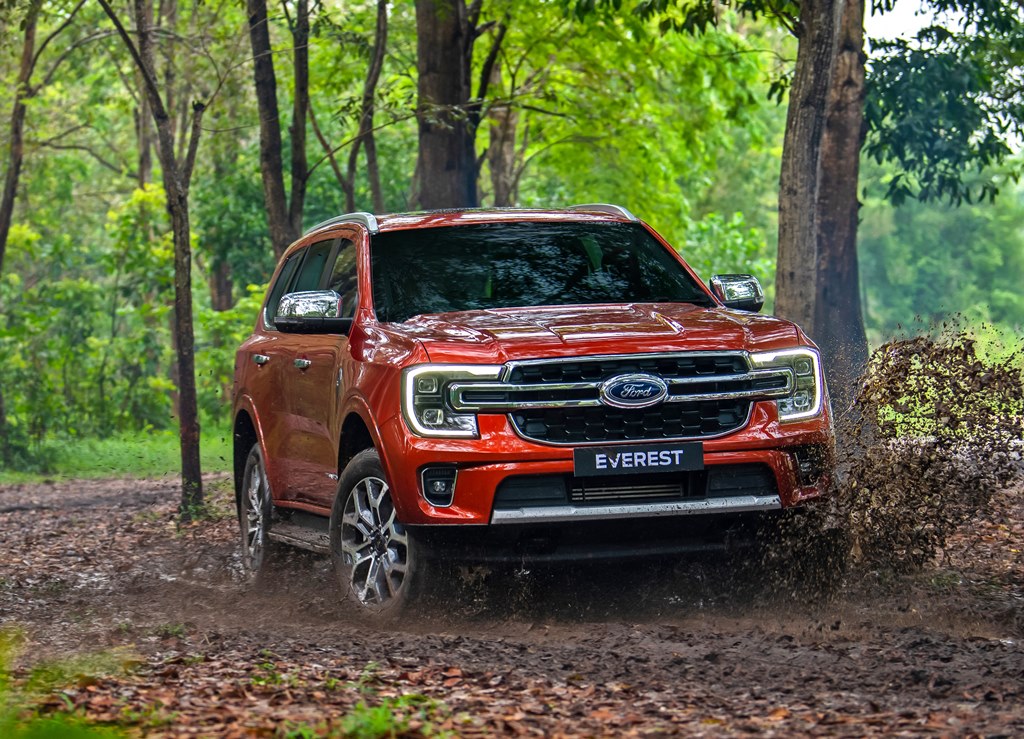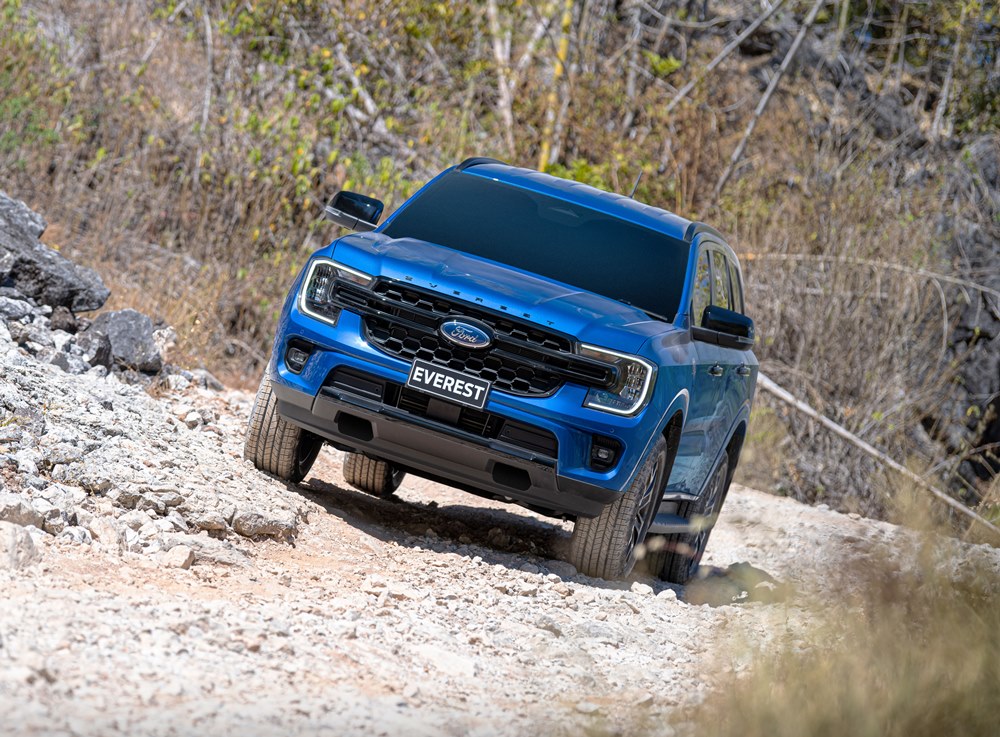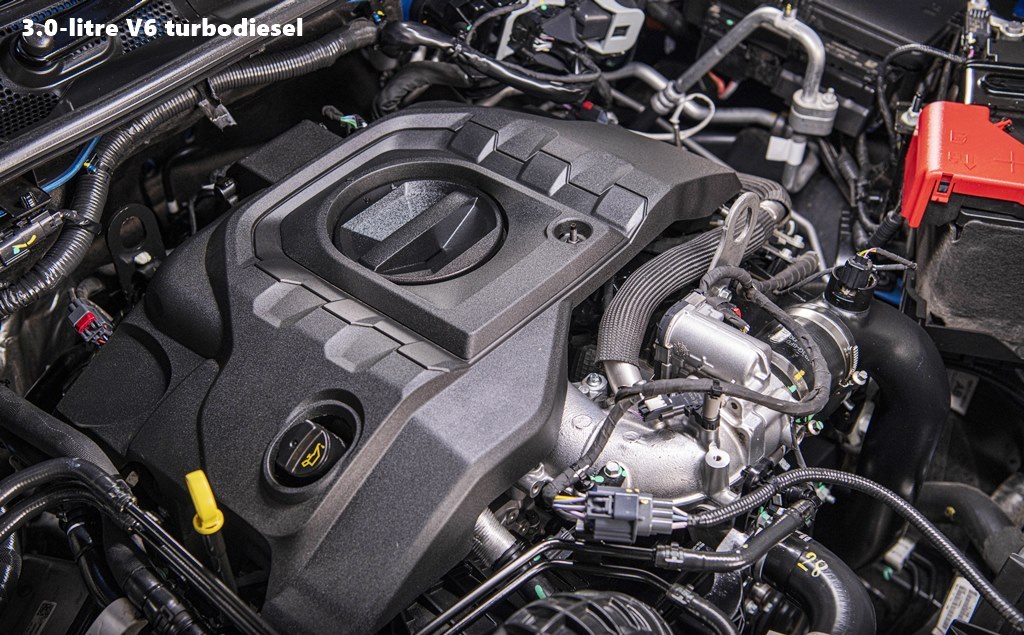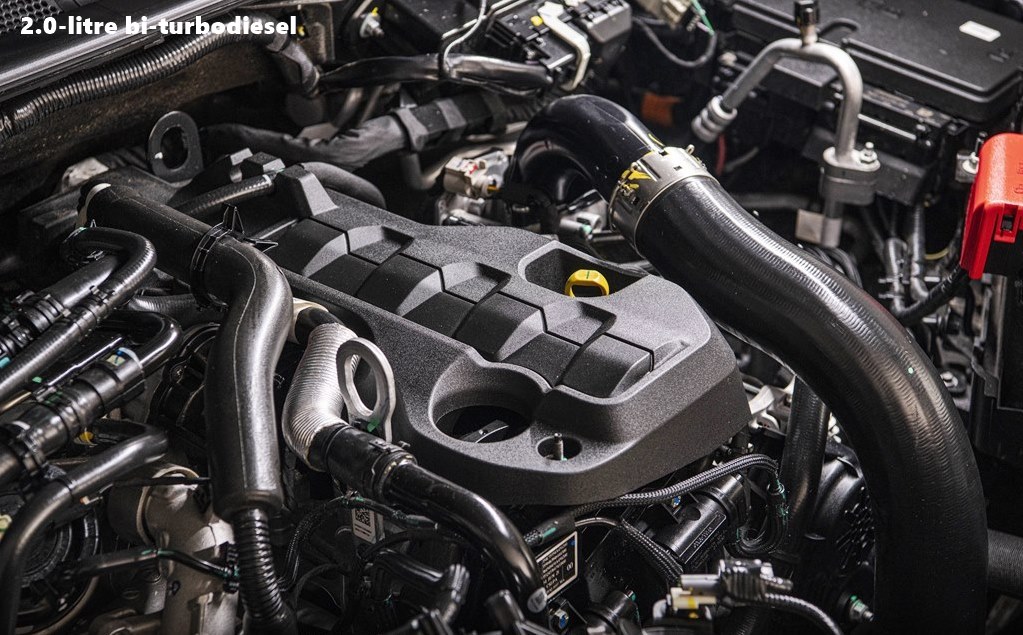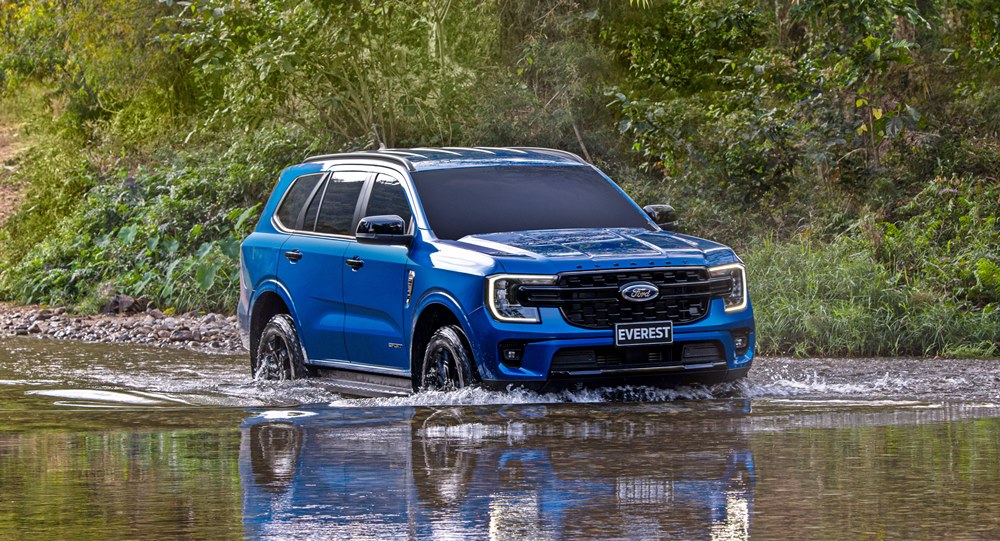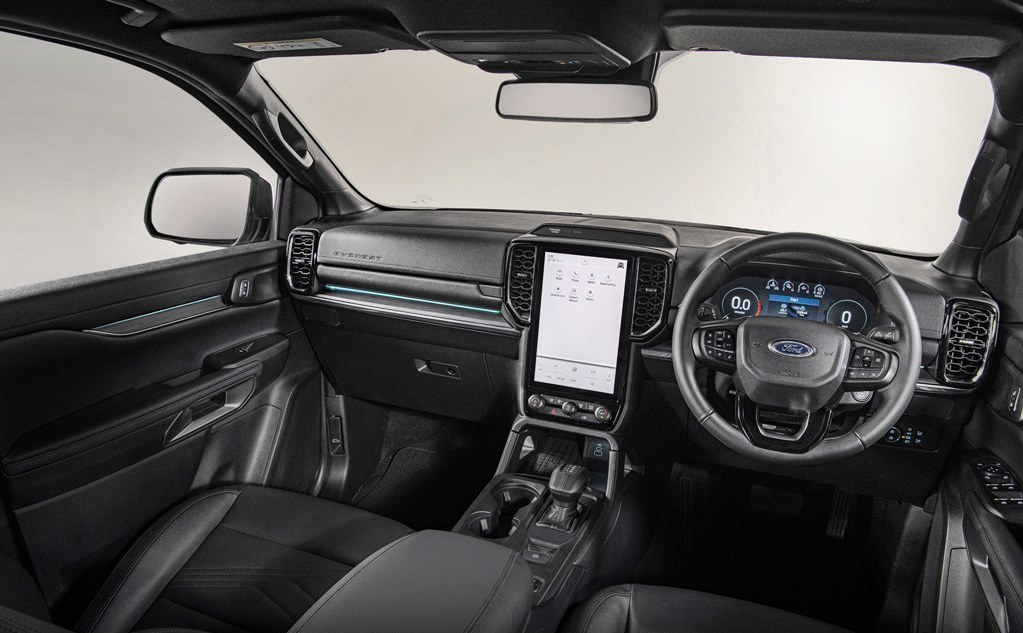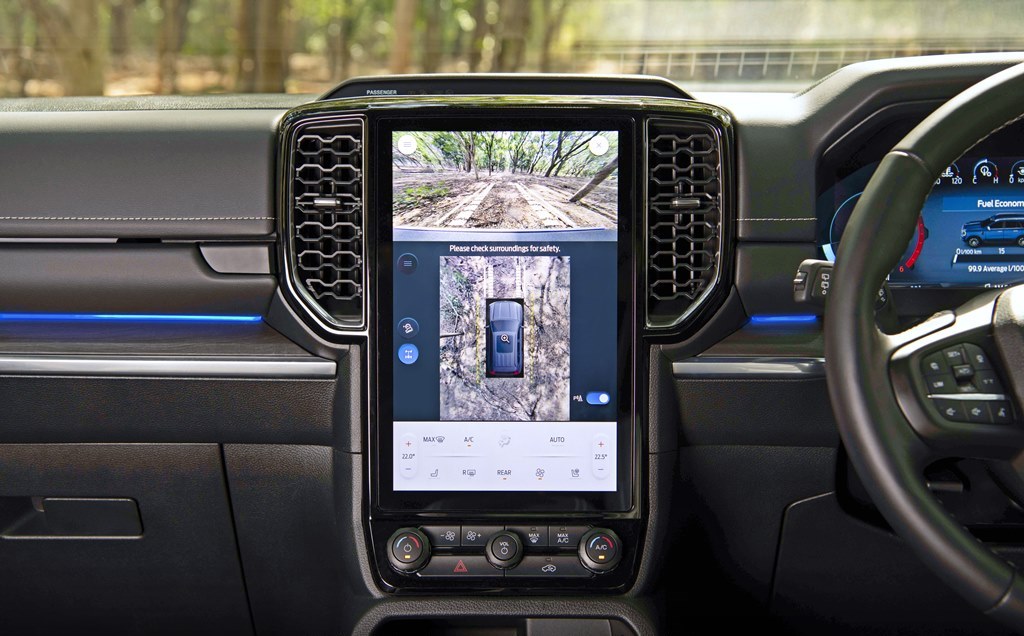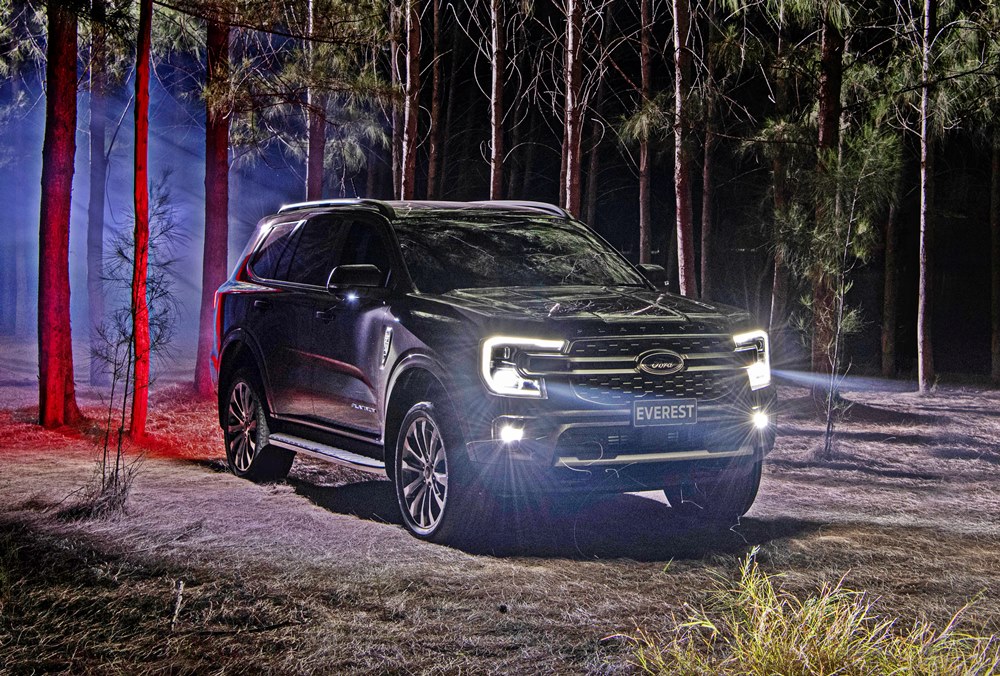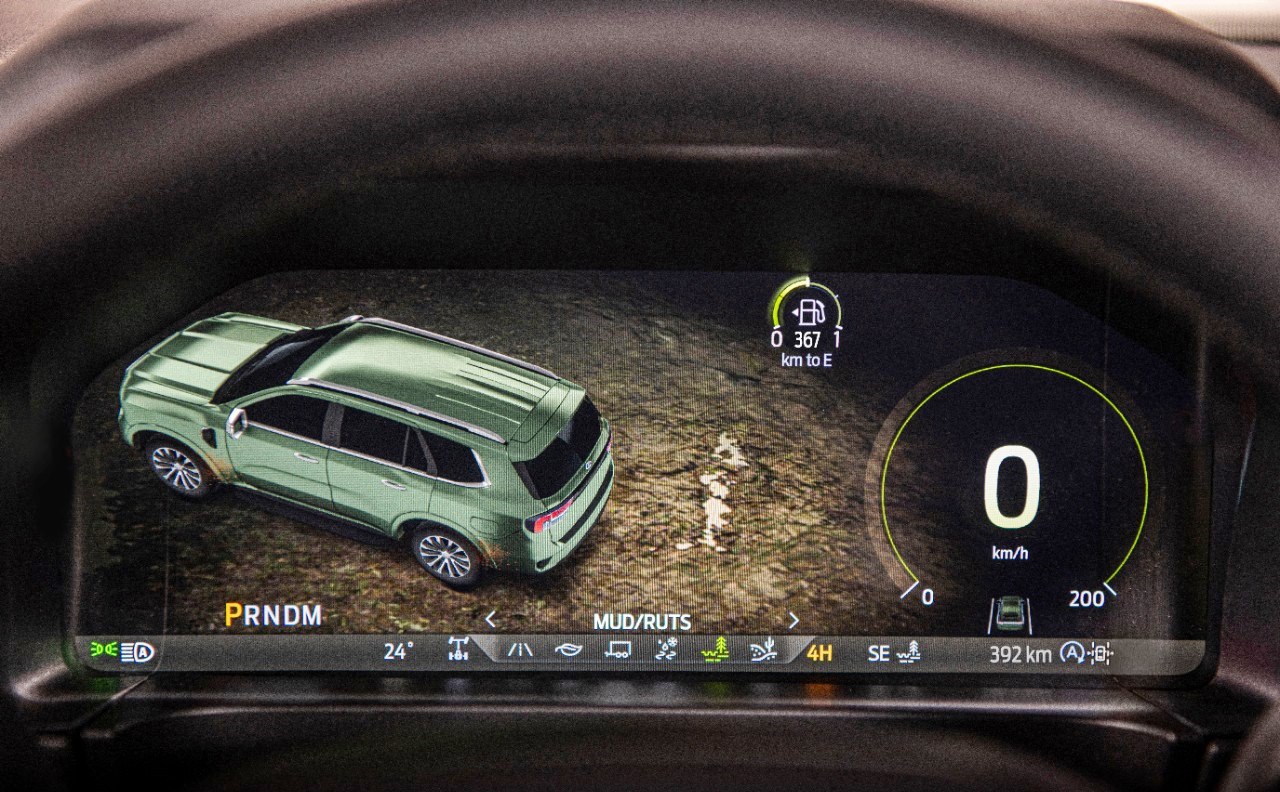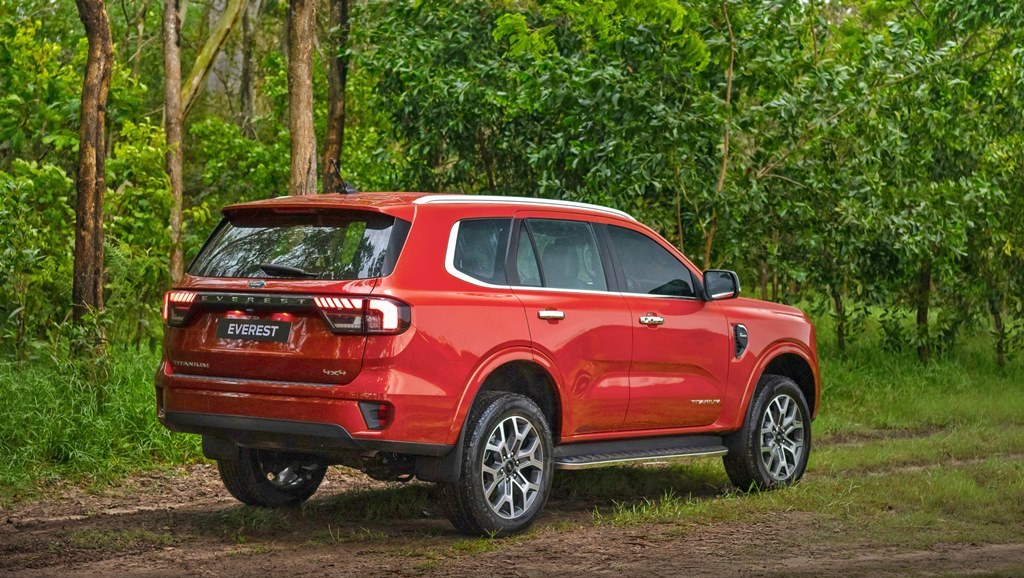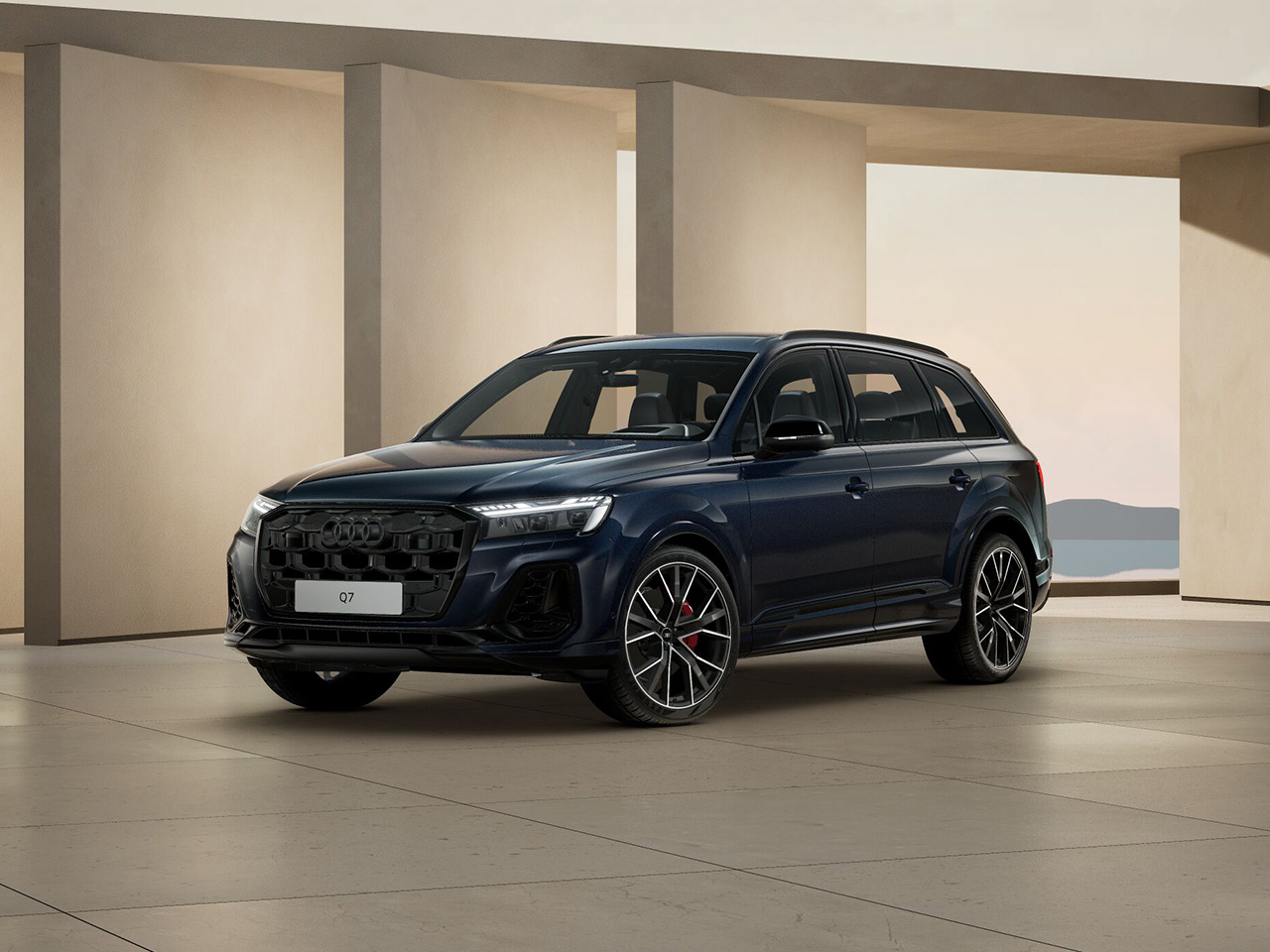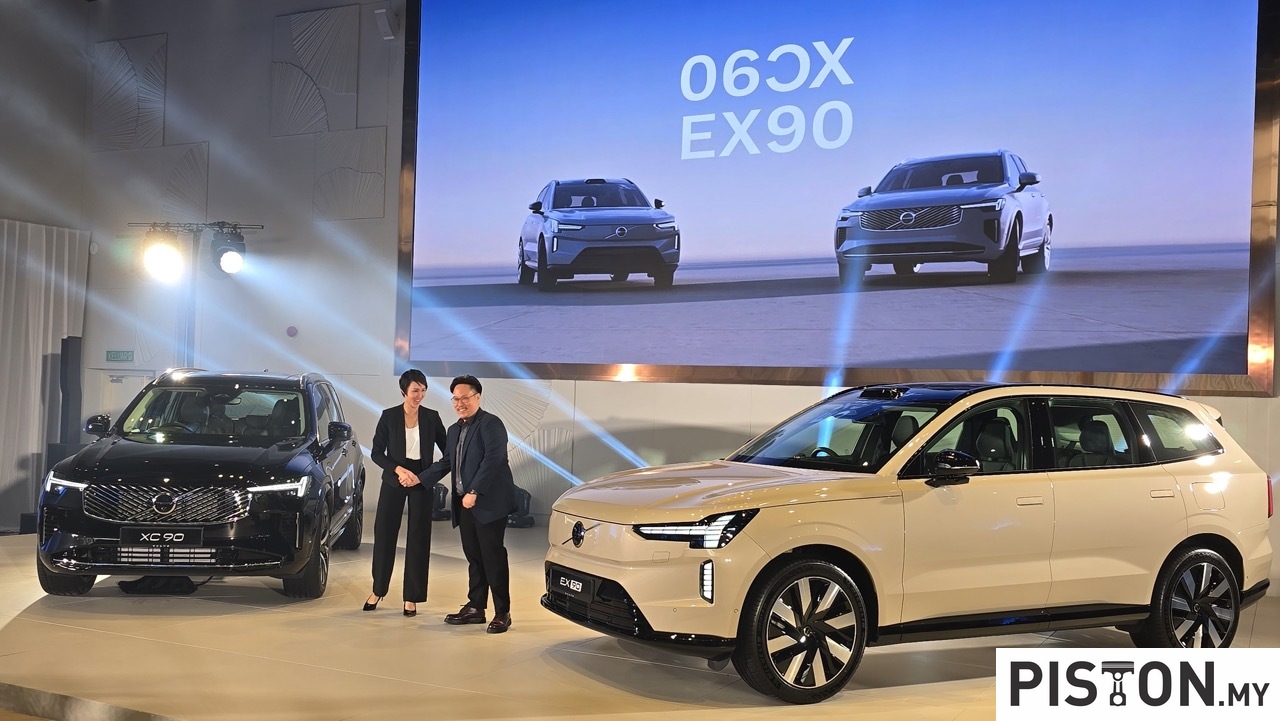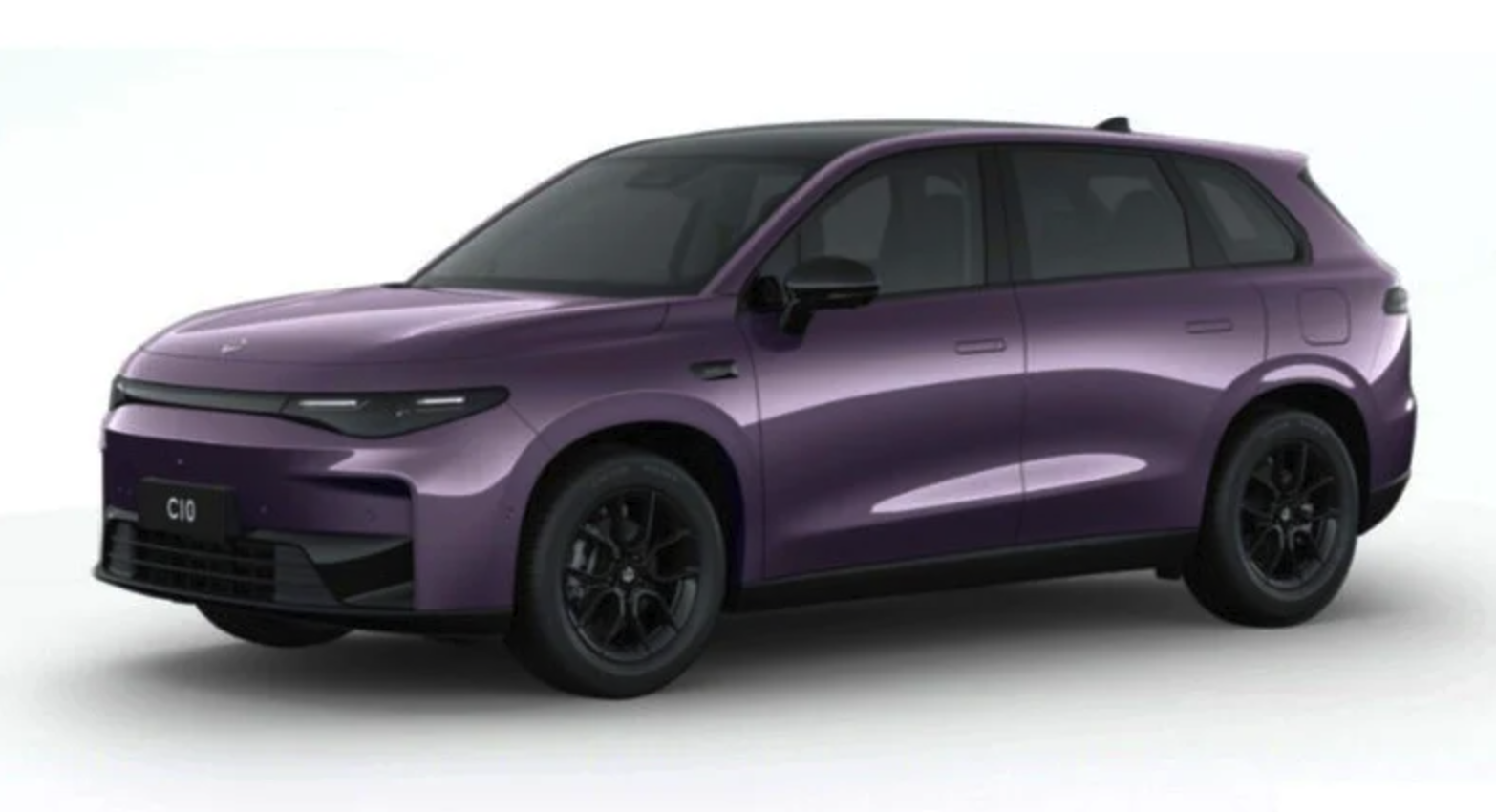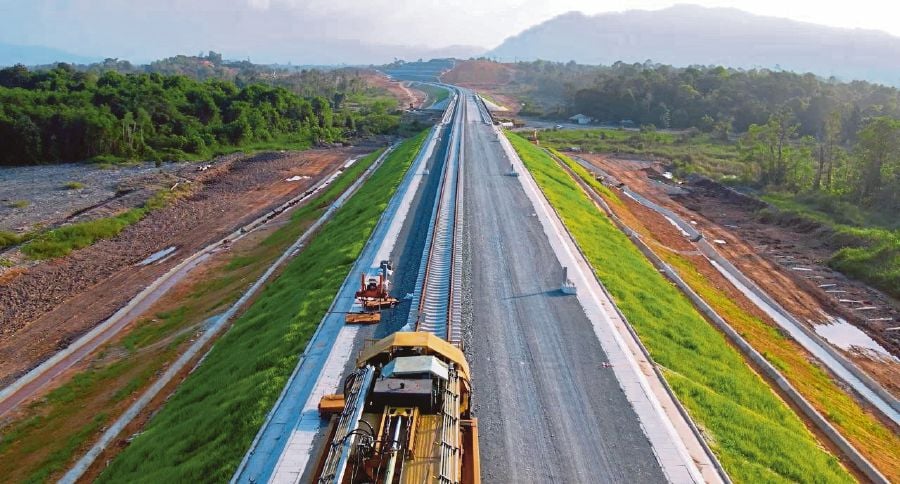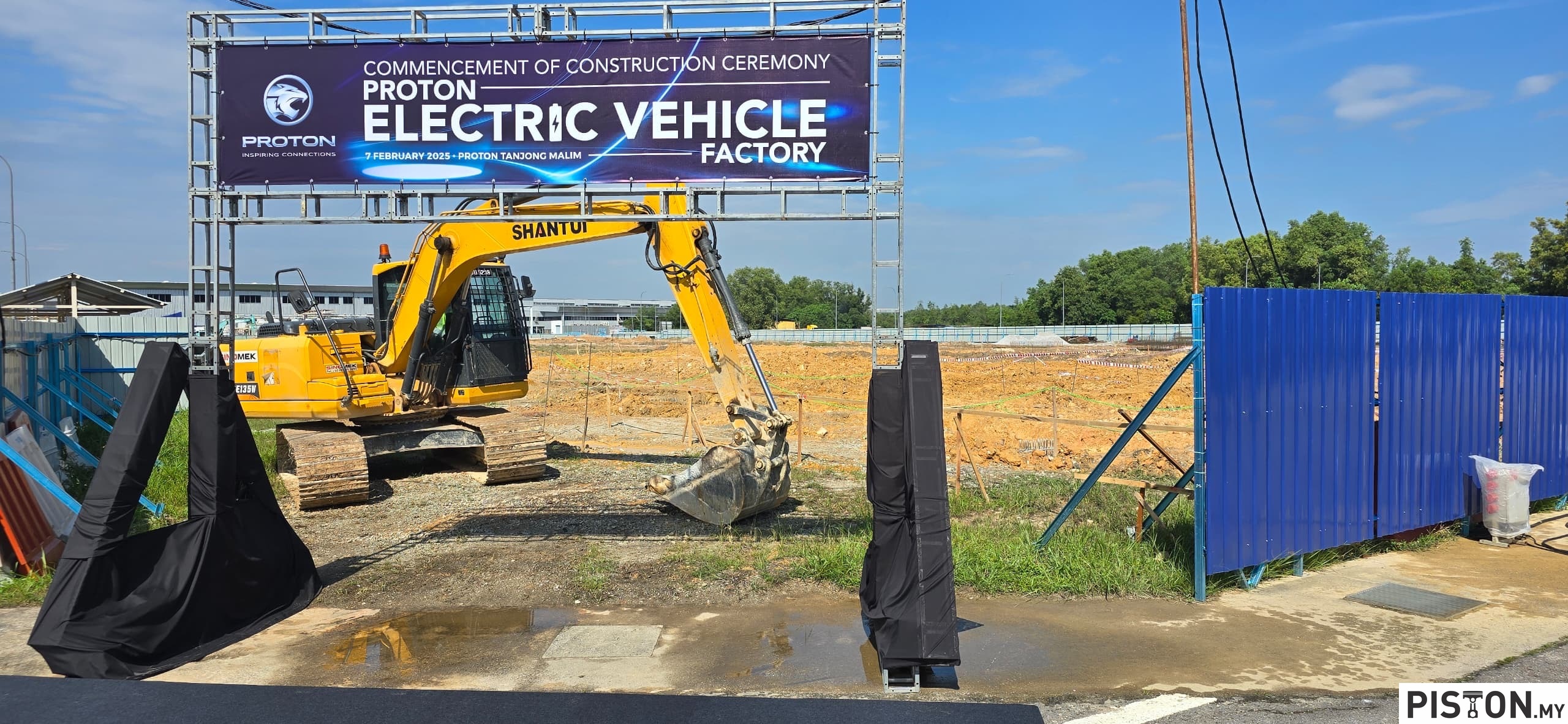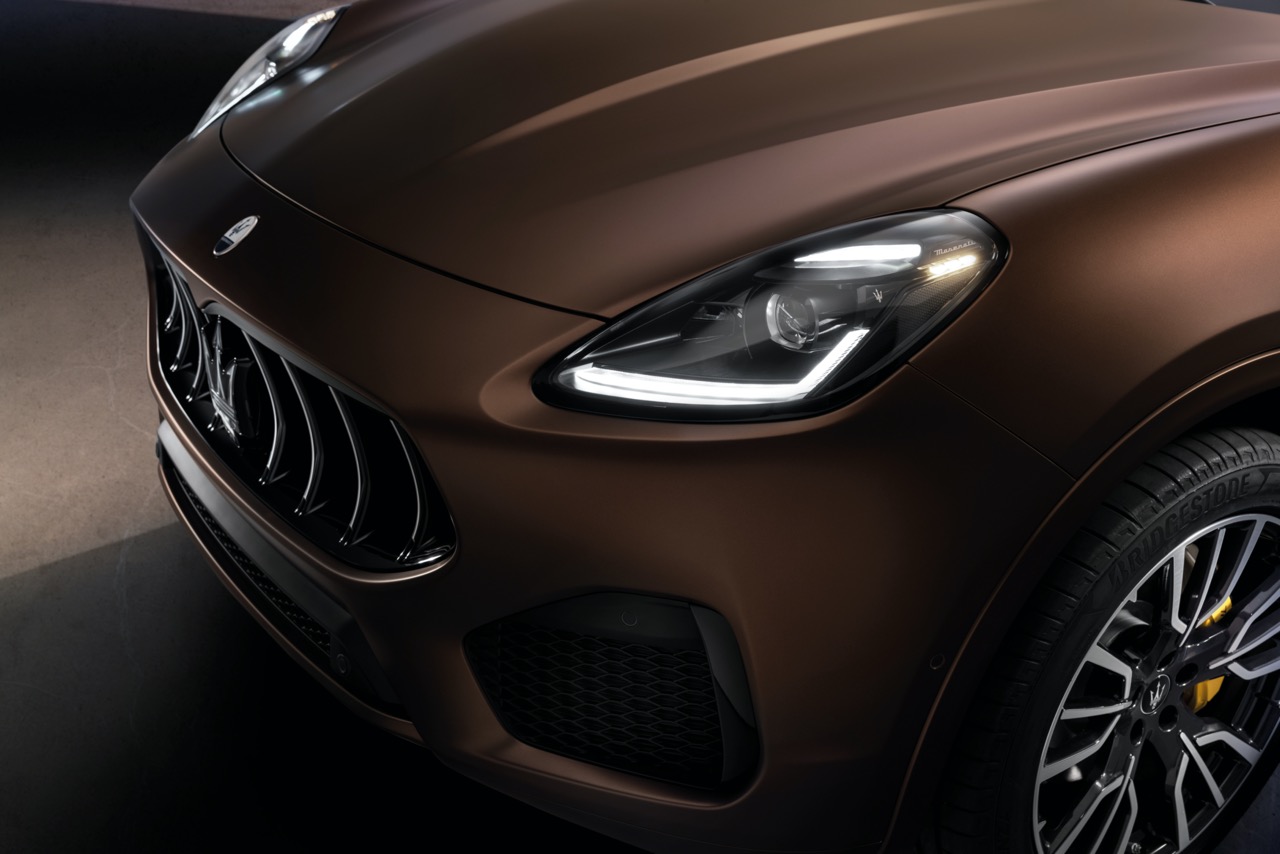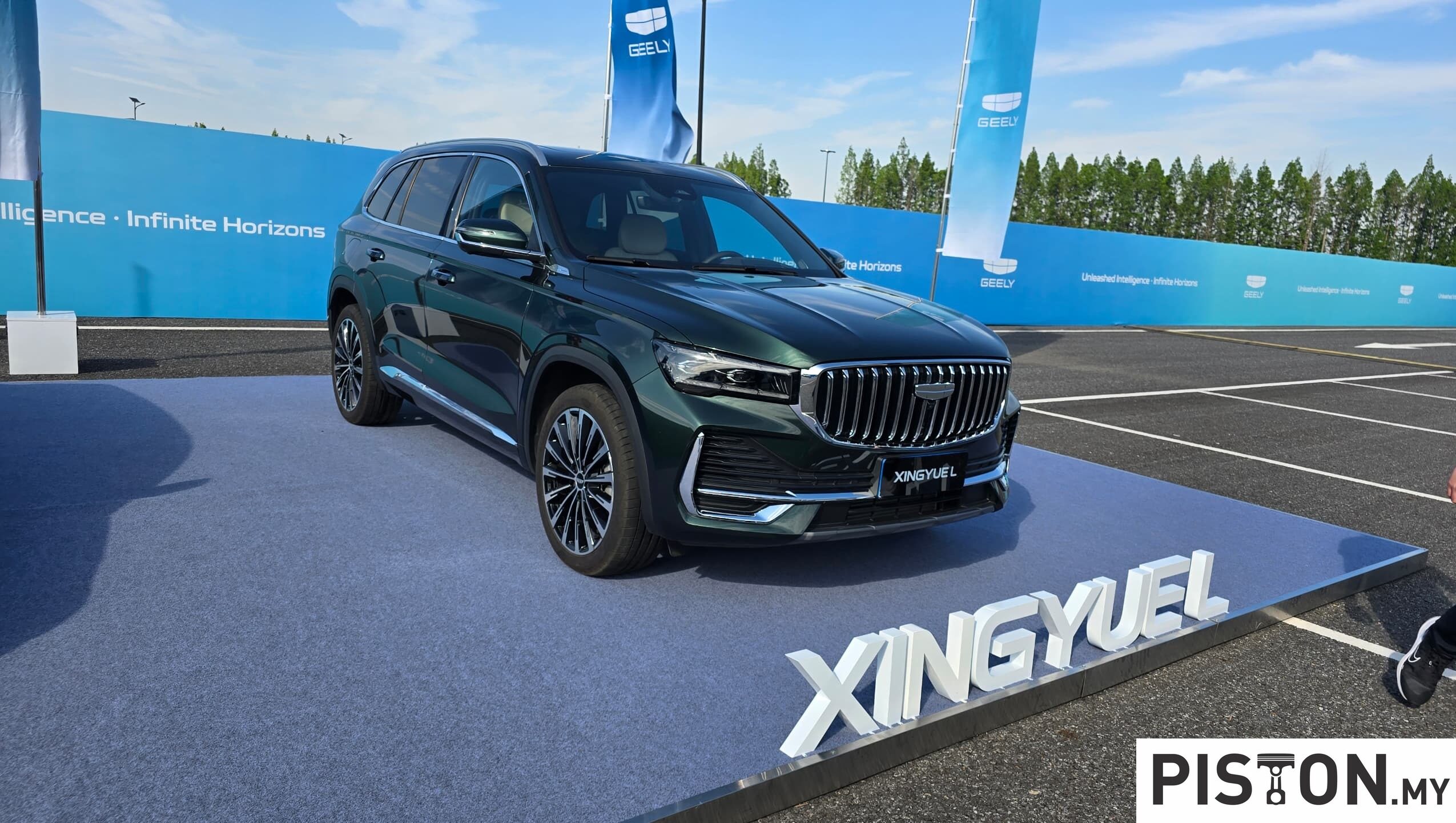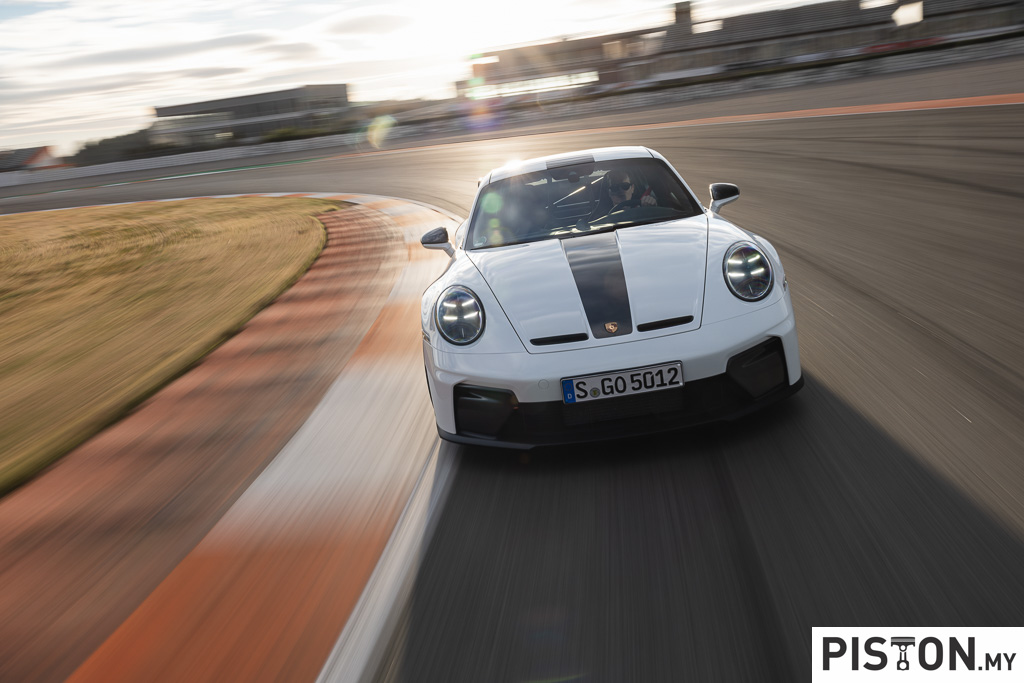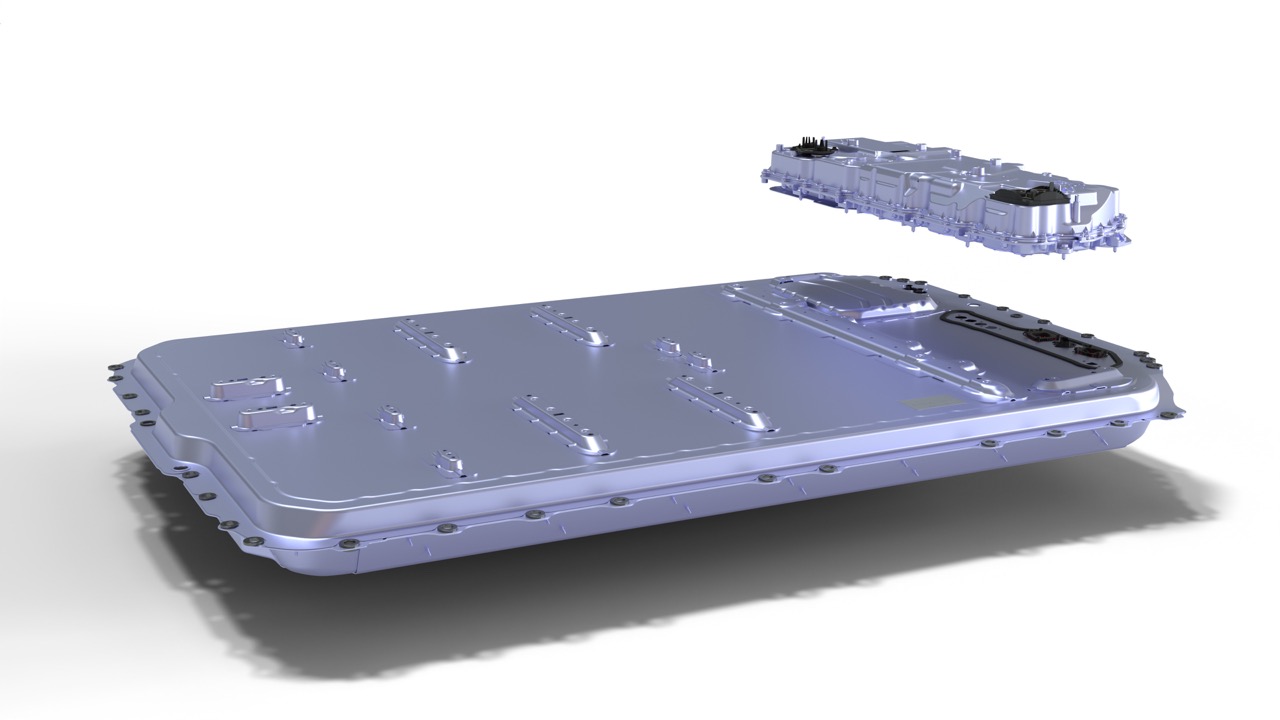Following the reveal of the new Ford Ranger last year, Ford has now finally given the new Everest SUV its global debut. While the press materials don’t mention the Ranger, it’s no secret that the two models are essentially shared products, with the Everest being a SUV version of the pick-up. The connection has been important, particularly in Thailand, where it is advantageous to be a truck-based SUV.
Ford design DNA
For the new Everest, which starts its third generation, the chassis has wider tracks and a longer wheelbase. The styling is that of a modern SUV with the same ‘C-clamp’ headlamps and strong horizontal upper grille bar at the front, now the signature look of Ford’s trucks and SUVs. For the Everest, the front end also has a mix of horizontal and vertical elements. The wider tracks add a muscular image to the vehicle with a more dramatic swell over the wheels.
The new integrated or stand-off roof rails are more than just a design detail as the Everest roof can now support static loads of up to 350 kgs and dynamic loads of up to 100 kgs. This means owners can carry bikes, canoes, a cargo pod or roof-top tent. A universal mounting system allows for addition of a range of accessories.
“We showed customers the Everest at several points during the design process, and their feedback was consistent: They loved the exterior with the strong and rugged design, but they also thought it was sleek and modern,” said Max Wolff, Design Director for China and Ford’s International Markets Group. “They said that the Everest would give them the confidence to go off-road; it looks like a proper SUV.”
Three engine options
Depending on the market, the Everest will be available with turbodiesel and petrol engines. There is a new 3-litre turbodiesel V6 and the proven 2-litre turbodiesel, and from 2023, a 2.3-litre EcoBoost petrol engine. The present generation sold in Malaysia has a 2-litre bi-turbo diesel engine and this is likely to be maintained while the petrol engine would probably also be offered. Ford’s 10-speed SelectShift automatic will continue to be available as well as a 6-speeder.
Besides the 50 mm increase in the track for a more controlled ride on-road, revisions have been made to the damper settings ‘to inject more fun and control’ into the Everest’s ride, on and off-road. There will be two 4×4 drive systems – a 2-speed electronic type (also known as a part-time 4×4) and an advanced, permanent 4-wheel drive system with an electronically controlled on-demand 2-speed electromechanical transfer case with selectable drive modes.
A rear locking differential is fitted and, in some markets, the Everest will also be available with 2-wheel drive. As with the current Ranger and Everest, the vehicle can move through water up to 800 mm deep.
‘Sanctuary’ in the cabin
While customers told the Ford people that they wanted toughness and capability on the outside and underneath, for the Inside, they wanted a ‘sanctuary’. So the designers put a lot of thought into the function and feel of the interior, taking inspiration from modern homes and bringing in plush materials, premium finishes and ambient lighting all in areas where customers can appreciate them the best.
The sense of spaciousness is amplified by the full-width dashboard. Access to the third-row seats is much easier, thanks to second-row seats that slide further forward than before. Additionally, all occupants now have places to store their things and depending on the model, charge their devices with power outlets in all three rows (some variants will have wireless charging pads).
Ford’s interior designers prioritised flexible seating in the new Everest so the second-row slides with a 60:40 split seatback and the 50:50 split third row in the 7-seater configuration can be folded at the touch of a button. Importantly, both the second and third-row seats have been designed to fold flat to allow for long loads to be carried safely.
To stop items falling out of the back opening when the tailgate is up, there is a small lip, affectionately known as the ‘apple catcher valley’, at the rear of the cargo area. The team also created an underfloor compartment for storing small items.
“One of the first things you’ll notice when you get into a new Everest is how quiet it is,” said Wolff. “We’ve all been in vehicles with multiple rows of seats, where you have to twist your head around and almost shout to be heard by passengers in the second or third rows. That’s an issue we wanted to solve for the Everest, so the interior would be a quiet place in which you can easily talk to your family or friends and enjoy the journey together.”
Customer-focused technology
In addition to a more refined and comfortable interior, Ford focused on incorporating the latest connectivity and technology features. 8-inch or 12.4-inch digital instrument panels replace the traditional analogue clusters so it’s a ‘glass cockpit’ now. Additionally, in the middle of the dashboard is a high-resolution touchscreen in either 10.1-inch or 12-inch sizes, running Ford’s latest infotainment system known as SYNC 4A.
The portrait-orientated screen also is linked to a 360-degree camera with split-view display to make parking easier in tight urban spaces or to assist when negotiating particularly tricky terrain. In addition, the driver can control the new exterior zone lighting system via the touchscreen which means they don’t have to park, work, camp or do anything in the dark.
Where available, the Everest’s dedicated off-road screen displays vehicle information and a front camera view of the terrain ahead, with predictive overlay guidelines designed to help the driver negotiate obstacles. With a single button press, the driver can view their driveline and diff-lock indicators, steering angle and guides, and vehicle roll and pitch angles. The camera views also help the driver guide the SUV into position to connect a trailer.
Driver-assist technologies
Ford has always treated its SUVs and pick-up trucks the same way where safety is concerned, giving just as much safety technology as its passenger cars. For the Everest, there are new and enhanced driver assist technologies and safety features to take the stress out of driving and help drivers to remain focused.
A new far-side airbag positioned between the driver and front passenger provides additional protection in the event of a side impact. Depending on the variant and the market, the addition of the far-side airbag and dual knee airbags brings the number of airbags up to 9, which cover all 3 rows.
With Active Park Assist 2.0, the new Everest can help the driver fit safely in tight spaces at the press of a button. The system takes care of the steering, gearshifts, acceleration and braking to manoeuvre into parallel or perpendicular parking spaces. It will also steer itself out of a parallel parking spot when prompted.
The Everest is primarily made in Thailand, along with the Ranger, and is expected to go on sale later this year. As Sime Darby Auto ConneXion has been selling the Everest, it would likely continue with the new generation, perhaps in 2023. If you’re interested in getting the current model, there should be some stocks available. Visit www.sdacford.com.my to locate a showroom for more information.
‘Ford Ranger Getaways’ by SDAC-Ford provide owners with ways to enjoy their truck to the fullest




